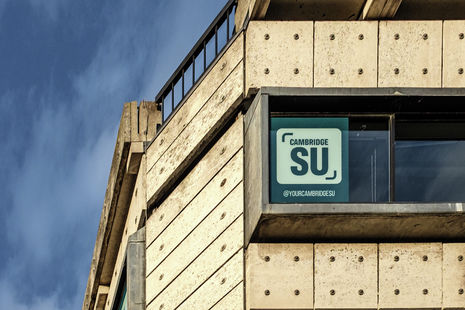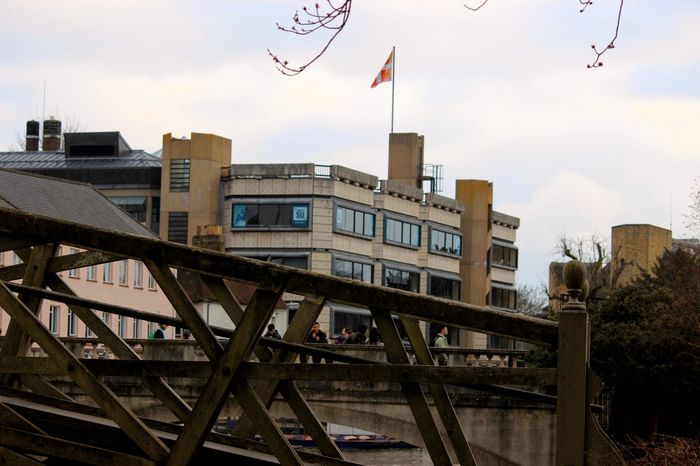Cambridge SU: has-been or never-was?
Annie Rainbow asks whether the underused SU building could ever be a thriving social hub

In hour four of a library stint, coffee dangerously close to spilling on an overheating laptop, observe a Cambridge student in their wild habitat. Watch as they scour group chats to find the watering hole for the night: perhaps the college bar, a pub, someone’s room? One place nobody suggests: the SU.
The majority of students at Cambridge have never set foot in the Student Union building. It has been housed on the top floor of Granta Place, in the city centre, since 2022 and is usually used for exam adjustments or the odd meeting.
This is a stark contrast with the social and community hubs student unions form at other universities. The Leeds University SU contains bars, a Co-op, and even a vendor selling bubble tea. Warwick students can get a haircut in the same building as their Wednesday club night. Both offer a range of engaging activities, with their SU websites reading more like music venues’ than student democratic centres’. For Cambridge students, the disparity in social life is all too familiar. But, can the SU really be blamed for our lack of a social utopia, compared to other universities?
“A stark contrast with the social and community hubs student unions form at other universities.”
One student at Leeds, who wishes to remain anonymous, described their student union as a “very essential hub at Leeds,” stating that the building “feels like a staple after a lecture”. They make use of it “during exam season, almost daily,” primarily due to the convenient meal deals. During the year, they’re still brought in at least “once a week” by a good pub quiz, or perhaps the applauded “Fruity Fridays club night.” In their words, the role of the SU is to deliver both “student support and entertainment,” organising amenities and student wellbeing. When I asked a Cambridge student, who chooses to remain anonymous, to define the role of the SU, they responded: “at other universities, a social place.”
The Cambridge SU stated that they see “the SU lounge as a centralised hub for students to spend time in, away from collegiate and faculty life”. It contains a “pool table, cheap vending machines, sofas and desks;” offers “print services, thesis binding and gown sales.” It’s worth mentioning that the latter refers exclusively to postgraduate sustainable gowns, a clarification that neatly illustrates the main obstacle to building a good social life in Cambridge: the barrier to entry.
Particularly for students from outer colleges, the need for a “centralised hub” is not currently filled by the SU building. For one student, the lack of a social SU has caused difficulty in meeting people. They stated that: “the role of the SU is to be a neutral party, separate from the college system,” yet a lack of student engagement has meant that the best inter-college hangouts occur at central pubs, like the Pickerel, which, they explained, “aren’t supposed to be a student hub, [or] a student union”.
Yet they did not believe there was much choice. On whether the SU could ever succeed, the student stated: “I don’t think they could ever turn it around […] student culture thrives on its history.” With Cambridge “a word-of-mouth culture,” the SU simply is not the place to go. Why would you propose a hangout at the SU when you could just go to your college bar?
“The SU simply is not the place to go”
However, there are many colleges that have a lacklustre bar or don't have a JCR. One student notes that, “if the student union doesn’t fill this void, then it is on the colleges. Emma, Trinity, Sidney Sussex, the ‘good bars’, are only available if you know someone.”
Expressing their frustration, they saw it as a “gatekeeping of student culture by creating disparity between colleges.” For students in colleges outside of central Cambridge, not having friends at central colleges can become isolating. For students at less wealthy colleges, student experience differs greatly from those in wealthier colleges.
In the collegiate system, students are restricted in how they can socialise with wider university peers. Blame for the SU’s inability to gain a stronger foothold in the university’s social scene cannot be placed exclusively at its feet, therefore, as the collegiate structure of the university makes it challenging to build a space and an organisation that represents the whole university.
The SU said: “Cambridge SU functions differently to other student unions. This is due to the collegiate system and localised JCRs and MCRs, whom we support through training, access to our website where they can run elections, and the provision of free welfare supplies.”
“Open access to spaces within colleges could be the answer to our issues with space”
By contrast, one third-year Warwick student felt directly involved with their SU democratically, through sports policies, calling this “massively important.” They were not, however, entirely positive about the space. They admitted that its reach was limited – beyond the Wednesday club night “where everyone goes;” the hairdressers; and the weekly pub quiz – they said “if the SU building wasn’t there, I don’t think it would affect my university experience, other than walking a bit further.”
If an SU is supposed to be, as the Leeds student stated, “for the students,” we must ponder what it is that students require. Cambridge students are supposedly equipped with seating areas, bars and JCRs through our colleges. However, what colleges can provide, and how close to the centre they can provide it, is not uniform. King’s College, for one, is only building a JCR this coming Michaelmas, despite having its own union since the 1960s. If KCSU has listened to student complaints to run campaigns on improving social spaces, perhaps the wider SU can do the same. One outer-college student was not so sure, saying “I don’t think they’d be able to drum up that same momentum.”
The wider SU struggles to gain enough engagement to truly represent the student body: the turnout in the most recent election was 19%, an increase from 10% in the prior two years. It’s clear that students are struggling to get involved with our SU.
It’s worth noting that the SU, housed in the University Centre, replaced a postgraduate bar, known as the ‘Grad Pad.’ The original use of the building was, as the Cambridge Independent wrote, “for people in the university community who did not have access to college amenities.”
The SU may not be pointless – and it certainly works hard to further the interests of the student body. It told Varsity: “Our Sabbatical Officers sit on top level committees and campaign for the change that students want to see at a university level and beyond – most recently, we led a national open letter for Sabbatical Officers regarding our students in Gaza which gained over 200 signatures from 75 SUs.”
Different colleges have different cultures, spaces and strengths. At Cambridge, the SU is structurally different, meaning that it acts as an advocacy body, not a venue provider. This is why it functions differently from Leeds or Warwick. Perhaps the struggle to understand the function of Cambridge’s SU, or the need to reform its space, has been triggered by a wider problem, that being the lack of access to college spaces, other than the one we attend.
If the SU is unable to provide the centralised, neutral space that many students crave, open access to spaces within colleges, regardless of CamCard colour, could be the answer.
 News / SU reluctantly registers controversial women’s soc18 December 2025
News / SU reluctantly registers controversial women’s soc18 December 2025 Features / Should I stay or should I go? Cambridge students and alumni reflect on how their memories stay with them15 December 2025
Features / Should I stay or should I go? Cambridge students and alumni reflect on how their memories stay with them15 December 2025 News / Dons warn PM about Vet School closure16 December 2025
News / Dons warn PM about Vet School closure16 December 2025 News / Cambridge study finds students learn better with notes than AI13 December 2025
News / Cambridge study finds students learn better with notes than AI13 December 2025 News / Uni registers controversial new women’s society28 November 2025
News / Uni registers controversial new women’s society28 November 2025










